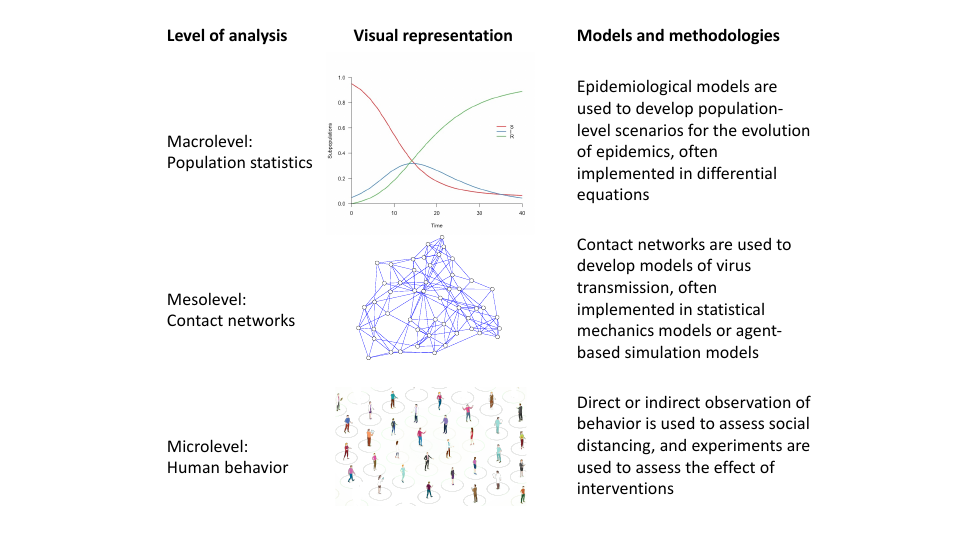The Lighting of the BECONs
A Behavioral Data Science Approach to Tracking Interventions in COVID-19 Research
DOI:
https://doi.org/10.35566/jbds/v2n1/p1Keywords:
Covid-19, contact network, behavioral data science, physical distancing, social distancing, intervention effects, network analysisAbstract
The imposition of lockdowns in response to the COVID-19 outbreak has underscored the importance of human behavior in mitigating virus transmission. The scientific study of interventions designed to change behavior (e.g., to promote physical distancing) requires measures of effectiveness that are fast, that can be assessed through experiments, and that can be investigated without actual virus transmission. This paper presents a methodological approach designed to deliver such indicators. We show how behavioral data, obtainable through wearable assessment devices or camera footage, can be used to assess the effect of interventions in experimental research; in addition, the approach can be extended to longitudinal data involving contact tracing apps. Our methodology operates by constructing a contact network: a representation that encodes which individuals have been in physical proximity long enough to transmit the virus. Because behavioral interventions alter the contact network, a comparison of contact networks before and after the intervention can provide information on the effectiveness of the intervention. We coin indicators based on this idea Behavioral Contact Network (BECON) indicators. We examine the performance of three indicators: the Density BECON, based on differences in network density; the Spectral BECON, based on differences in the eigenvector of the adjacency matrix; and the ASPL BECON, based on differences in average shortest path lengths. Using simulations, we show that all three indicators can effectively track the effect of behavioral interventions. Even in conditions with significant amounts of noise, BECON indicators can reliably identify and order effect sizes of interventions. The present paper invites further study of the method as well as practical implementations to test the validity of BECON indicators in real data.









